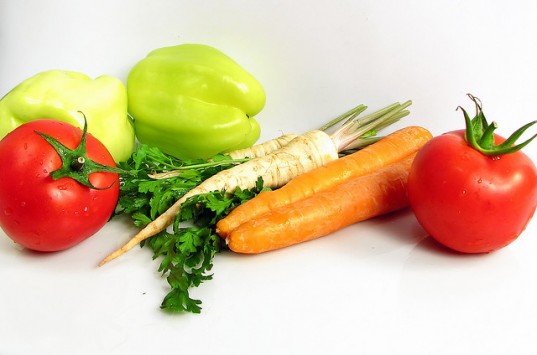It’s always important to be mindful of food safety, but it’s even more critical just before and during pregnancy. Pregnant women run a greater risk for food borne illness (sickness caused by eating tainted food) because of a weakened immune system that makes it harder for the body to fend off germs. When you’re expecting, or planning on it, you want to protect your child and yourself as much as possible. Food safety is mostly in your hands. Armed with some basic knowledge, mothers-to-bee can ward off exposure togerms and other potentially harmful contaminants.
Simple Steps to Safer Food
Although troubling germs lurk in the food we eat, most food, when handled properly, is perfectly safe. Err on the side of caution with these five basic steps to food safety.
Shop Wisely Make sure that all the food you buy is in good condition. Meat, poultry, and dairy foods should be as fresh as possible; check the end or sell by date to be sure. Pick up the cold and frozen foods on your list, such as meat and dairy products, from the grocery store shelves last, just before you head for the checkout. Go directly home and put the refrigerated and frozen foods away immediately, to keep freshness. Use ready-to-eat, highly perishable foods, such as dairy products, meat, seafood, and produce, as soon as possible after you buy them.
Keep Hands and Utensils Clean Before you handle food, always wash your hands thoroughly (for at least twenty seconds) with warm soapy water. Wash them again during food preparation if you have wiped your nose, coughed, or sneezed into your hand, used the bathroom, changed a diaper, handled dirty laundry, touched a pet, taken out the garbage, or performed any other activity that could transfer germs to your hands. Other people’s germs can make you sick, so encourage proper hand washing by your family and guests by making soap and clean towels or paper towels available at every sink in your home. When you can’t use soap, based wipes or gel formulas, which are effective for sanitizing the hands. Clean your cutting boards, dishes, utensils, and counter tops thoroughly with dish washing soap or a cleaning agent that is safe to use on surfaces that come in contact with food. Always rinse raw fruits and vegetables under cold running water before using them. For thick or rough-skinned vegetables and fruits (such as potatoes, carrots, and cantaloupe), use a small vegetable brush to remove the surface dirt. Cut away the damaged or bruised areas on produce, because germs thrive in these moist places.
Keep Certain Foods Separate Segregate raw animal foods, such as eggs, and seafood, from ready-to-eat foods, like salad greens and chopped fruit. Use a separate plate for cooked food. For example, when you’re grilling meats or seafood, do not use the same platter, plate, or bowl for the cooked meat or fish that you used for marinating the raw meat or fish.
Cook Food Properly Cooking destroys harmful germs, but only when the food has been heated to the proper temperature. Have a reliable meat thermometer on hand, and cook (and reheat) foods properly, using these handy guidelines. Cook fish until it reaches an internal temperature of 145°F (63°C). If you don’t have a food thermometer or it’s not proper to use one, cook the fish until it flakes with a fork. Allow shrimp, lobster, and scallops to reach the proper color: shrimp should be pink and the flesh opaque (milky white); properly cooked lobster meat and scallops will be opaque, too, as well as firm to the touch. Cook clams, mussels, and oysters just until their shells open. Discard shellfish with closed shells. Cook eggs until the yolks and whites are firm. Let egg dishes reach 160°F (71°C). Do not eat raw or partly cooked eggs in any form. Reheat all leftovers to 165°F (74°C). Bring leftover soups, sauces, and gravy to a boil. If you won’t be arriving home within two hours of being served at a restaurant, don’t take leftovers or any other food with you. When you order takeout, eat the food immediately or refrigerate it right away.
Refrigerate Perishables Most bacteria thrive from 40°F (4°C) to 140°F (60°C). Discourage growth by keeping your refrigerator at 40°F (4°C) or below and the freezer at 0°F (18°C). Don’t pack the refrigerator too full with food.


